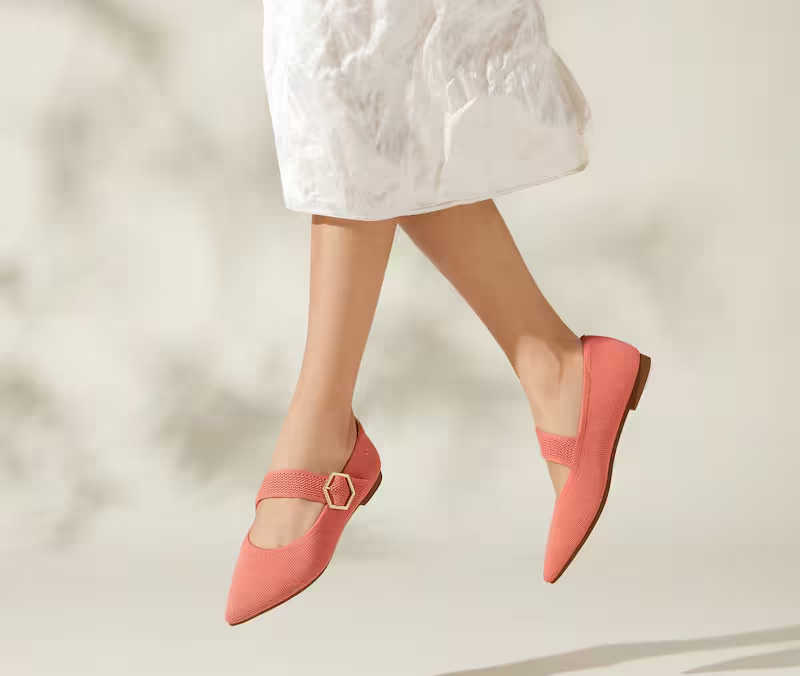No matter how well you rinse that to-go container, there’s a good chance you won’t be able to properly recycle it.
In the US, only around 9% of plastics produced are recycled. Though we view recycling as an easy way to create a more eco-friendly world, there’s a lot of misinformation about it.
Luckily, some NGOs, nonprofits, and businesses are exploring new ways to solve our plastic crisis, from our to-go containers to our shoes. In recent years, shoes made from recycled plastic have made steps forward. But what does that mean? And are recycled shoes just another greenwashing ploy?
While shoes made from recycled materials can be more eco-friendly than other mainstream alternatives, they’re not a perfect solution. ‘Sustainable’ shoes still get landfilled and are usually made from partially recycled materials (more on that).
Though a nuanced topic, recycled shoes are not all bad. Read on to learn what’s worth celebrating, what still needs improvement, and how to support better options.
What Are Recycled Shoes?
Shoes are made from a variety of materials, usually rubber, natural materials like leather or cotton, and synthetics like polyurethane or nylon, which are plastics. Synthetic materials are used in products like shoes because they are flexible, easy to care for, water resistant, and cheap.
While both natural and synthetic materials have environmental drawbacks, synthetics have an especially high impact on our planet. Because of this, there has been a push to find alternatives to these synthetics. One alternative is to use recycled synthetics.
Using recycled synthetics doesn’t necessarily mean the entire shoe is made from recycled materials; but generally, “recycled shoes” use recycled synthetics instead of new or virgin, synthetic materials.
The Benefits of Shoes Made From Recycled Plastic
Making shoes from recycled plastic has two main benefits. First, it reduces the need for new materials, which means we can extract fewer resources. Second, it helps clean up the waste that would otherwise have to be managed or pollute the environment.
Recycled Plastic Shoes have a Lowered Carbon Footprint
Recycled materials require fewer new materials and cause fewer greenhouse gas emissions since less fossil fuel is extracted and used in production. Furthermore, some recycled polyesters produce less than 79% of the C02 emissions of new polyester.
Recycled Plastic Shoes Clean Up Plastic Waste
Around 6 million tonnes of plastic waste end up in rivers, oceans, and nearby coastlines yearly. This waste threatens ecosystems, harms marine life, and risks human health. Reducing and ultimately removing this waste is crucial to ensure these ecosystems continue to thrive.
One response to this issue is collecting this plastic waste, recycling it, and turning it into new products, including apparel and shoes.
Rothy’s, a San Francisco-based shoe company, has collected over 170 million single-use plastic bottles from the shoreline (and neighboring areas) to clean up marine life. The company turns these recycled plastic bottles into fibers to create the knit fabric used in the mesh for its shoes.
Drawbacks to Recycled Plastic Shoes
Though recycled synthetic shoes are better than new synthetic sneakers, they’re not a perfect solution. Synthetic materials, recycled or not, have their drawbacks that we must also acknowledge.
Recycled plastic shoes rely on waste
Recycled shoes rely on virgin plastic to be recycled. 430 million tonnes of plastic are produced yearly—while cleaning up the resulting waste is important, what’s even more important is finding a way to reduce this production.
A sustainable footwear future implements a circular economy, where waste is recirculated and turned into new products. Plastics are not a good option for a recirculated material, because they are only recycled a few times before they break down. In addition, they rely on fossil fuels that perpetuate climate change.
Plastic recycling can be toxic
Another drawback to recycled shoes is that recycled plastics can be toxic. According to a 2023 Greenpeace report, many recycled plastics commonly contain at least one toxic chemical, including dioxins and flame retardants.
Recycling plastics poses health risks to workers who may be exposed to harmful chemicals while inhaling toxic dust and fumes. New evidence also shows that it’s harmful to the wearer’s health (although feet may be, quite literally, the lowest priority here).
Most shoes are tossed
The problem with recycled shoes is that many people think the shoes themselves are what’s recycled. The reality is very different. Shoes are difficult to recycle because they’re made up of multiple components and materials. Yet around 300 million pairs of shoes are thrown out by Americans each year, and can take up to 40 years to decompose.
Because only 1% of textiles are recycled today, the industry and consumers must prioritize closing the loop and wasting less.
How to Support a Sustainable Future with Recycled Shoes
Though not a perfect solution, recycled shoes are a step in the right direction. Here are a few ways to prioritize the best options to create a sustainable wardrobe.
Support brands that use innovative, eco-friendly materials
Many brands that use recycled materials in their shoes try to incorporate other sustainable materials as well, where possible.
For example, Rothy’s created an algae-based foam for the inside of its shoes. Brazilian brand Cariuma uses Mamona oil, a plant-based alternative to petroleum, to decrease the use of synthetic materials. Another shoe company, Allbirds, commonly uses TENCEL, a more eco-friendly semi-synthetic made from wood pulp.
Supporting brands that see recycled synthetic materials as just one piece of the sustainability puzzle is a way to continue to uplift opportunities for eco-friendly innovation.
Purchase quality products and reduce consumption
The best way to support sustainable fashion is to simply consume less. Fast fashion has negatively influenced our culture by normalizing the frequent purchase of new products.
Taking time to research the brands you’re buying and purchasing long-lasting shoes is an important way to help the environment by consuming less.
Participate in circular initiatives
With so many shoes ending up in landfills, finding ways to prevent this is crucial. You can look for brands with take back programs. But be sure to ask them what they do with the shoes to give them a second life, as many of these can be greenwashing schemes to encourage new purchases.
Support brands with transparent supply chains
Manufacturing shoes, especially when using plastic materials, can harm workers if they’re exposed to toxins.
Transparency into a company’s supply chain is crucial to understanding how ethical and eco-friendly its processes truly are. Search for a company’s code of conduct and evidence of factory evaluations on its website. You can also use brand directories like Good On You to read about a company’s ethical and sustainable scoring.
Recycled Shoe Brands Worthy of Your Support
To sum up some of the brands mentioned above that offer shoes made from recycled plastic and add a few more for consideration, here are five shoe brands using recycled materials that you can feel good about supporting.
- Rothy’s – Rothy’s collects plastic water bottles to create recycled knit fabric for its shoes. The company also uses algae-based foam, natural rubber, and hemp fiber, among other eco-friendly materials.
- Cariuma – In addition to recycled nylon and recycled plastic bottles (PET), Cariuma uses biodegradable materials like their sugarcane EVA, which is sourced from Brazilian sugarcane and is sustainably grown.
- Vivaia – Vivaia uses recycled plastic bottles, PET, and faux fur. The brand also uses natural materials, including natural rubber, sugarcane EVA, rice husks, and insoles made from a mix of herbs. [Try Kasi’s style pick: the classic Mary Janes]
- Native – This innovative brand swaps plastic for bio-based materials, sets science-based targets to reduce its climate impact, and pioneered the Native Shoes Remix™ Project – a recycling initiative that gives solves new life in projects across the community.
- Allbirds – This brand’s mission is to use renewable materials wherever possible. This includes natural, plant-based leathers and organic natural fibers. When using a natural material isn’t an option, Allbirds opts for recycled plastics to fill the gaps.
- Vejas – This renowned French brand uses a mesh fabric made from 100% recycled polyester from plastic water bottles. The brand uses fair trade and organic raw materials. It offers transparency into their supply chain and manufacture their products at their factory in Brazil.
Wrapping Up
Sustainable footwear is a complex topic plagued with greenwashing. The term “recycled” is often used to make something seem more sustainable than it actually is. However, the story is nuanced when it comes to shoes made from recycled plastic.
Yet, with innovative companies using recycled synthetics and other sustainable practices, turning to recycled synthetic shoes as an alternative to your average sneakers is a confident step, or jump, in the right direction.
Have tips for sustainable sneakers? Walk them into the comments.
Photo by Vivaia.
Author Bio:
Jackie Warehime is a New York-based designer and sustainability advocate with a background in product design. She writes about sustainable design at www.jackiewarehime.com to explore and expand the ethical and sustainable approaches to crafting our world.



